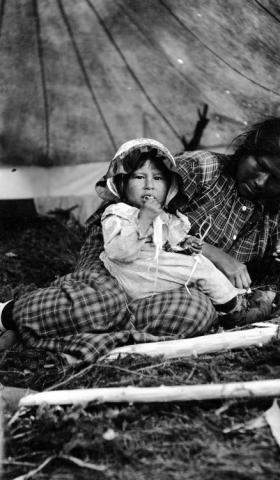
In recognition of this year's Indigenous Peoples' Day, we're sharing some photographs from illustrator and painter Frank E. Schoonover (1877-1972). These images were captured during a 1911 trip to Long Lake, Ontario, which Schoonover spent sketching and photographing supply posts of the Hudson Bay Company, fur trapping outposts, and indigenous populations like the Ojibwe people seen in these lantern slides.

The Ojibwe settled around the Great Lakes region sometime around the year 1400, but spread northward and westward during the 17th century in response to displacement and economic disruptions caused by European colonization of the region. The Ojibwe of Long Lake in southeastern Ontario identified this region in Anishinaabeas Ginoogamaa-zaaga'iganiing, meaning "at the Long Lake". Those that re-settled around the lakes of Southern Ontario formed the subtribes of the Mississauga (meaning"[Those at the] Great River-mouth") andNipissing (meaning "little water", likely as in comparison to the Great Lakes).
At the time that Schoonover visited the region, the Ojibwe, like many indigenous populations of the Americas, had been experiencing decades of population decline. Census estimates in 1910 counted approximately 21,000 Ojibwe in the United States and 25,000in Canada, down from an estimated combined 105,000in the 1760s. In the year 2000, almost a century later, thanks in part to a long tradition of powerful socio-political activism and organizing, these numbers had grown to an estimated 130,000 in the United States and 60,000 in Canada, making them the second-largest First Nations population in Canada, and the fifth-largest in the United States,
These images are part of Hagley Library's Frank E. Schoonover negatives (Accession 2017.239) collection.You can view more images from this 1911 trip, as well as other items from this collection, by clicking here.

